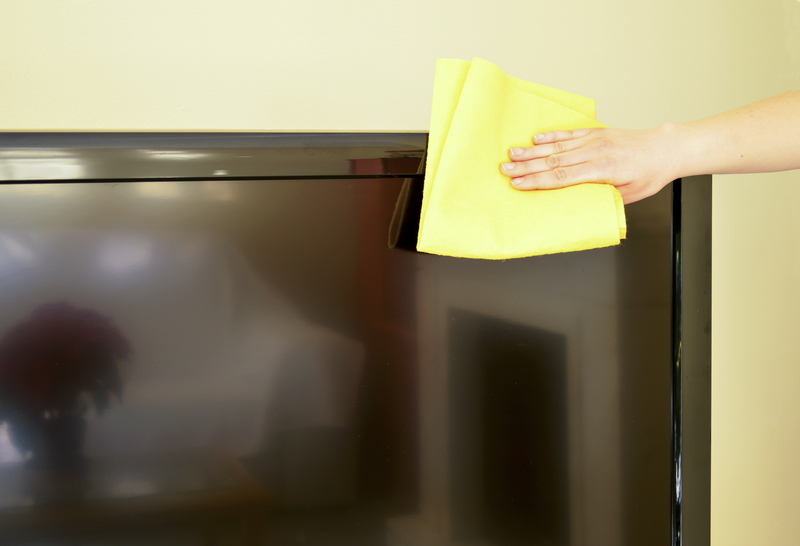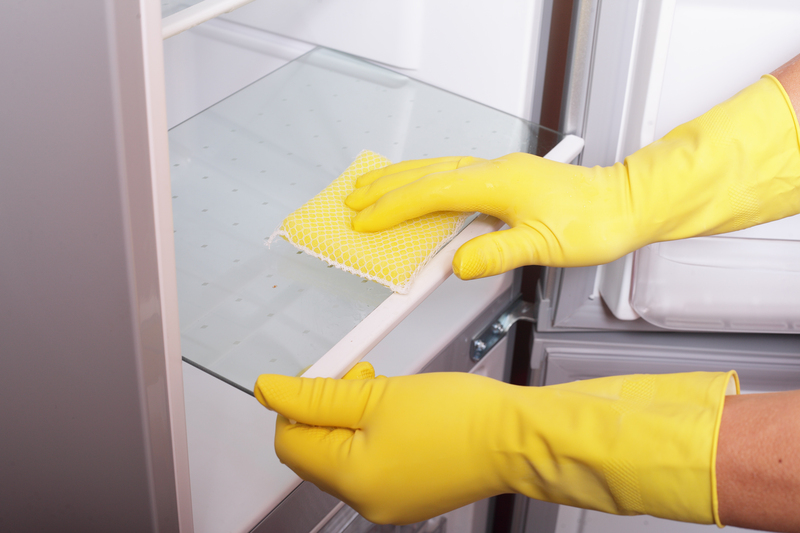Say Goodbye to Burnt-on Stovetop Grime: Essential Tips
Posted on 25/08/2025
Say Goodbye to Burnt-on Stovetop Grime: Essential Tips
Tired of staring at stubborn, burnt-on grime on your stovetop? If you're wondering how to achieve a spotless, gleaming stove without endless scrubbing or harsh chemicals, you're in the right place. Stovetop grime isn't just unsightly--it can harbor bacteria and affect your stove's performance over time. This comprehensive guide provides everything you need to know about removing burnt-on stove stains, preventing greasy build-up, and maintaining your cooktop's sparkling clean appearance with ease.
Why Burnt-On Stovetop Grime is Hard to Remove
Stovetops endure daily use, and spills or splatters can quickly turn into *burnt-on residue* if not cleaned up promptly. When high heat cements food particles and grease to the surface, conventional wiping doesn't cut it anymore. Over time, these burnt stains accumulate and become a magnet for more dirt and germs.
- High temperatures cause a chemical reaction that bonds food particles firmly to metal or glass surfaces.
- Greasy residue acts as an adhesive for dust and further spills.
- Older, dried grimy spots become nearly impossible to remove with basic cleaning methods.
Stop dreading after-dinner cleanup! Using the right techniques and products can help you say goodbye to burnt-on stovetop grime for good.

Essential Tools and Supplies for Stubborn Stovetop Grime
Before tackling deep-set stains, gather the right cleaning tools. Here are the must-haves for removing burnt on stains from stovetops:
- Non-abrasive scrubbing pads or sponges: Prevent scratches while breaking down grime.
- Baking soda: A natural abrasive perfect for loosening caked-on food.
- White vinegar: Cuts through grease and neutralizes odors.
- Dish soap: Lifts away fats and proteins.
- Plastic or silicone scraper: Gets under stuck-on bits without damaging glass or enamel.
- Microfiber cloths: Trap and remove grime without spreading it around.
- Spray bottle: For easy application and mixing of homemade cleaners.
For tougher jobs, consider a razor blade scraper (for glass cooktops only)--but use with utmost caution to avoid scratches.
Step-by-Step Guide to Cleaning Burnt-On Stove Grime
1. Safety First: Turn Off and Cool Down Your Stovetop
It's vital to ensure your stovetop is switched off and completely cool before starting. Cleaning heated surfaces can cause burns or release toxic fumes if you use the wrong chemicals.
2. Remove Grates and Burner Caps
Take off all removable parts. Soak grates and burner caps in hot, soapy water while you work on the main surface. This loosens stubborn grime and makes detailed cleaning easier.
3. Wipe Loose Debris
Use a damp microfiber cloth to clear away clearly visible crumbs, dust, or loose burnt bits. Don't skip this step--it helps prevent scratches in later steps.
4. Apply Baking Soda Paste
Make a thick paste using baking soda and a few tablespoons of water. Spread this mixture generously over the burnt-on stove stains, especially targeting the toughest spots. Let it sit for at least 15-20 minutes--this will loosen the grime.
5. Spray with Vinegar
Fill a spray bottle with white vinegar and mist it over the baking soda paste. The mix will fizz, helping to break down greasy residues and loosen food remnants.
6. Gently Scrub Stubborn Areas
- Use a non-scratch sponge or soft-bristled brush to massage the paste into the surface.
- For particularly resilient patches, carefully use a plastic or silicone scraper to lift away the debris. Always move in gentle, circular motions to avoid scratching.
- Never use steel wool, as it can damage most stovetop surfaces.
7. Wipe and Rinse
Wet a fresh microfiber cloth and wipe away all baking soda and vinegar residue. Rinse and wring the cloth several times until the surface is clean.
8. Repeat if Necessary
For extra-stubborn grime, repeat the baking soda and vinegar process. Occasionally, several rounds may be required for older, burnt-on layers.
9. Tackle Grates and Burner Caps
After soaking, scrub these pieces with a sponge or brush and rinse thoroughly. If they're still sticky, try a paste of baking soda or a spritz of vinegar as well.
10. Dry and Reassemble
Dry all parts completely before putting them back. This prevents rust and ensures safe operation.
Specialized Solutions for Every Stovetop Type
Not all cooktops are created equal. Use these stovetop-specific tips to make sure your method matches your appliance.
How to Clean Gas Stovetops
- Be extra careful with burner caps and ignition ports--avoid getting them too wet.
- Use a toothbrush to scrub around tiny crevices after soaking.
- Baking soda and vinegar work well, but make sure to rinse thoroughly before relighting burners.
How to Clean Electric Stovetops
- Don't submerge electric coils--simply wipe with a damp cloth and mild detergent once unplugged.
- Clean drip pans by soaking, scrubbing, or even replacing if they're badly corroded.
Cleaning a Glass or Ceramic Stovetop
- Never use abrasive pads, scouring powder, or harsh chemicals--they can scratch or dull the finish.
- Use a designated glass cooktop cleaner if available.
- Carefully use a razor blade scraper (held at a 45-degree angle) for hardened grime. Always keep the blade flush and don't press too hard.
DIY Stovetop Cleaning Solutions
Don't want to fuss with commercial stove cleaners? Many household staples do a surprisingly effective job in keeping stovetop grime at bay:
- Lemon and salt scrub: Slice a lemon, sprinkle salt, and use it to scour greasy spots. Anti-bacterial and refreshing!
- Hydrogen peroxide and baking soda: For hefty stains, let this bubble away deep residue.
- Dawn dish soap and hot water: Ideal for soaking removable parts and loosening heavy grease.
- White vinegar: Excellent for cleaning and deodorizing most stovetop surfaces.
Preventing Stubborn Grime: Daily and Weekly Maintenance
Prevention is the easiest way to keep your stove sparkling clean. Follow these simple routines to stop burnt-on stains from forming:
- Wipe spills as soon as they happen: The longer you wait, the more likely they'll burn and stick.
- Use burner liners or protectors: These catch drips and can be easily replaced or wiped.
- Clean your stovetop weekly: Even a quick wipe keeps buildup in check.
- Deep clean grates and burner caps monthly: Soaking and scrubbing prevents caked-on residue.
*Consistent maintenance* makes your end-of-week kitchen routine easier and your stovetop safer and healthier.
Burnt-On Stovetop Grime: Common Mistakes to Avoid
- Don't use harsh scouring pads or steel wool--these can irreparably scratch delicate surfaces.
- Avoid excessive water around burners and electrical components.
- Don't let grime build up--regular cleaning is faster and easier in the long run.
- Don't mix chemical cleaners: Some combos (e.g., bleach and ammonia) are dangerous.
- Never use metal scrapers on glass or ceramic unless specifically rated as safe by the manufacturer.

FAQs: Banishing Stovetop Grime
What is the fastest way to clean burnt-on stovetop grime?
For fresh spills, a quick wipe with a soapy sponge usually does the job. For older, burnt-on grime, apply a baking soda paste, let it sit, then scrub gently and rinse. Specialized stovetop cleaners can make the process faster as well.
Can I use oven cleaner or bleach on my stovetop?
*Oven cleaner* may be too harsh for many stovetop materials, especially glass or ceramic. Bleach can react badly with metals or discolor some surfaces. Stick to baking soda, vinegar, or dish soap unless manufacturer guidelines say otherwise.
How do I get rid of burnt smell from my stovetop?
After removing burnt debris, use a vinegar and water solution or lemon juice to neutralize lingering odors. Leaving an open bowl of baking soda nearby can also absorb unwanted smells.
Is a professional stovetop cleaning worth it?
For severely neglected or commercial stoves, professional cleaning may restore functionality and appearance. For most home cooks, however, DIY stovetop grime removal using simple supplies is highly effective.
Conclusion: Enjoy a Grime-Free, Shiny Stovetop
A spotless stovetop isn't just about aesthetics--it helps your kitchen run smoother, prevents bacteria buildup, and prolongs the life of your appliance. With these *essential tips* and a handful of basic supplies, you can say goodbye to burnt-on stovetop grime for good! Incorporate these easy strategies into your regular cleaning routine for a kitchen you'll love to cook in every day.
Ready to enjoy a sparkling-clean stove? Use these step-by-step methods and never stress about tough stove stains again!





